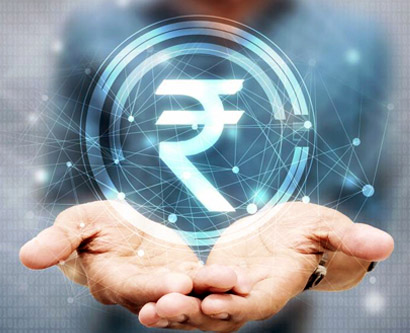Currency
Currency
❖ The first gold coins in India were introduced during the reign of the Gupta’s in AD 390-550.
❖ Rupee was first minted in India during the reign of Sher Shah Suri around AD 1542. It was a silver coin weighing around 179 g, and it replaced the gold coins.
❖ The British for the first time brought paper currency in 1882.
❖ In 1935, when the Reserve Bank of India was established, the Indian rupee became independent.
❖ In 1947, India became a member of the IMF, and exchange value of the rupee came to be fixed by IMF standards.
❖ In 2010, India officially adopted the symbol for Indian Rupee (₹), derived from the Devanagri consonant (₹) or ‘Ra’. Uday Kumar Dharmalingam has designed this Indian Rupee sign.
Systems of Currency (Decimal System)
❖ The Indian Coinage (Amendment) Act 1955, which was brought into force from 1 April, 1957, converted the Indian Currency system into the decimal system.
❖ The Indian Coinage (Amendment) Act 1955, which was brought into force from 1 April, 1957, converted the Indian Currency system into the decimal system.
❖ The old system of rupee, annas, and paise (1 rupee = 16 annas) was replaced by Rupee and Paise system. The first one-paise coin under the decimal system was issued in March 1962 and the first one rupee coin in July 1962.
Issue and Distribution of Currency
All coins and one rupee notes are issued by the Government of India and therefore, the one rupee note does not bear the signature of the Governor of the RBI.
Devaluation of Currency
❖ Devaluation refers to reducing value of the Indian rupee in comparison to the US dollar in the world market.
❖ In 1947, India became a member of the IMF, which necessitated fixing of exchange value of the Indian rupee as per the IMF standards.
❖ As a result, India was obliged to devalue the rupee, and so far, the following devaluations have taken place:
• First Devaluation in June 1949, the Indian rupee was devalued by 30.5%. Dr John Mathai was the Finance Minister.
• Second Devaluation in June 1966, whereby the Indian rupee was further devalued by 57%. Sachindra Chaudhury was the Finance Minister.
• Third and Fourth Devaluations: On 1 July, 1991, the Indian rupee was devalued by 9% and again further devalued by 11% on 3 July, 1991, bringing the total devaluation to 20%. This was during the finance ministership of Dr Manmohan Singh. Since 20 August, 1994, the rupee has been made a freely convertible currency on current account.
Small Note on Coins System in India
❖ The Government of India has the sole right to mint coins. The responsibility for coinage vests with the Government of India in terms of the Coinage Act, 1906.
❖ The designing and minting of coins in various denominations is also the responsibility of the Government of India.
❖ Coins are minted at four Indian Government Mints: Mumbai, Alipore (Kolkata), Cherlapally (Hyderabad), and Noida (UP). The coins are issued for circulation only through the Reserve Bank in terms of the RBI Act.
❖ Coins in India till 2011 were issued in denominations of 10 paise, 20 paise, 25 paise, 50 paise, one rupee, two rupee, and five rupees. Coins of denomination of 25 paise and below ceased to be legal tender from 30 June, 2011. These were not accepted for exchange at bank branches and RBI Issue Offices from 30 June, 2011.
❖ Coins up to 50 paise are called ‘small coins’, and coins of Rupee one and above are called ‘Rupee Coins’.
❖ Coins can be issued up to the denomination of 1,000 as per the Coinage Act, 1906. Government has, in the recent past, imported coins to augment the indigenous production.
❖ Notes in denomination of 5 have been reintroduced to supplement the supply of coins.
